
Nano Hybrids and Composites
Scope & Guideline
Revolutionizing Materials with Nano Insights
Introduction
Aims and Scopes
- Nanocomposite Materials Development:
Focuses on the synthesis and characterization of nanocomposites, leveraging the unique properties of nanoparticles to enhance the mechanical, thermal, and electrical performance of composite materials. - Nanotechnology Applications in Energy:
Investigates the role of nanomaterials in energy applications, such as photovoltaics, photocatalysis, and energy storage systems, aiming to improve efficiency and sustainability. - Green Synthesis and Environmental Impact:
Emphasizes sustainable methods for synthesizing nanomaterials, including biosynthesis and eco-friendly techniques, to minimize environmental impact and promote green chemistry. - Characterization Techniques and Methodologies:
Utilizes advanced characterization methods to analyze the structural, optical, and electrical properties of nanomaterials, providing insights into their behavior and applications. - Interdisciplinary Research:
Encourages collaboration across various scientific disciplines, integrating materials science, chemistry, physics, and engineering to foster innovative solutions to complex problems.
Trending and Emerging
- Sustainable and Green Nanotechnology:
There is a growing emphasis on sustainable practices in nanomaterial synthesis, such as using plant extracts and waste materials, which aligns with global sustainability goals and environmental consciousness. - Hybrid and Multifunctional Materials:
Research on hybrid materials that combine different types of nanomaterials to achieve multifunctionality is on the rise, indicating a trend towards developing materials with diverse applications. - Advanced Characterization Techniques:
The use of sophisticated characterization methods, such as advanced microscopy and spectroscopy techniques, is increasingly prevalent, allowing for a deeper understanding of material properties at the nanoscale. - Applications in Renewable Energy and Environmental Remediation:
A significant focus on the application of nanocomposites in renewable energy technologies, such as solar cells and photocatalysis for water purification, reflects an emerging priority in addressing energy and environmental challenges. - Smart Materials and Sensors:
Research into smart materials that respond to external stimuli, as well as the development of sensors utilizing nanomaterials for environmental monitoring and health diagnostics, is becoming increasingly important.
Declining or Waning
- Traditional Composite Materials:
The emphasis on conventional composite materials appears to be diminishing, as the focus shifts towards more advanced nanocomposites that incorporate nanotechnology for enhanced properties. - Basic Material Science Studies:
There is a noticeable decrease in publications centered solely on basic material science without practical applications, as the journal leans towards studies that demonstrate real-world applications of nanomaterials. - Linear and Non-Functional Analysis:
Research focusing purely on linear mechanical properties without exploring functional applications or advanced characterization is becoming less common, reflecting a trend towards more comprehensive studies. - Niche Applications:
Specific niche applications, such as certain biomedical uses of nanomaterials, seem to be receiving less attention, possibly due to the emergence of broader, more impactful research themes.
Similar Journals
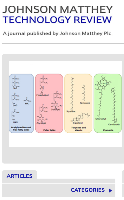
Johnson Matthey Technology Review
Driving progress in metals, alloys, and process chemistry.Johnson Matthey Technology Review is a premier open access journal published by Johnson Matthey Publishing Ltd, dedicated to advancing research and innovation in the fields of Electrochemistry, Metals and Alloys, and Process Chemistry and Technology. Since its transition to open access in 2014, the journal has provided a platform for scholars and industry professionals to share their findings and insights in a rapidly evolving field. Based in the United Kingdom, this journal has garnered significant attention, achieving impressive rankings such as Q3 in Electrochemistry and Q2 in Metals and Alloys, reflecting its growing impact within the scientific community. With a commitment to promoting high-quality, peer-reviewed research, the Johnson Matthey Technology Review plays a vital role in connecting researchers, facilitating knowledge exchange, and fostering collaboration across disciplines, making it an essential resource for anyone involved in material science and chemical engineering.
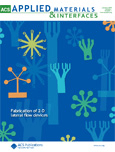
ACS Applied Materials & Interfaces
Connecting Science and Technology for a Sustainable FutureACS Applied Materials & Interfaces, published by the American Chemical Society, stands as a leading journal in the field of applied materials, nanotechnology, and interdisciplinary research in medicine. With an impressive Impact Factor that places it in the Q1 category across Materials Science, Medicine, and Nanoscience and Nanotechnology, this journal consistently ranks among the top tier, evidencing its significance and influence in advancing scientific knowledge. The journal’s scopus ranking of 33 out of 463 in General Materials Science further underscores its critical role in disseminating innovative and high-quality research. Although it is not an open-access journal, a diverse range of access options is available, ensuring that vital research findings are accessible to a broad audience of researchers, professionals, and students. Targeting breakthroughs in the synthesis, characterization, and application of materials and interfaces, ACS Applied Materials & Interfaces serves as a pivotal platform for publishing cutting-edge studies essential for future technological advancements.

JOURNAL OF ELECTRONIC MATERIALS
Connecting Researchers to Groundbreaking Insights in ElectronicsWelcome to the Journal of Electronic Materials, a premier publication in the field of materials science. Published by Springer, this esteemed journal has been a beacon for groundbreaking research in electronic, optical, and magnetic materials since its inception in 1972. As an established resource, it boasts a commendable impact factor and categorically ranks in the second quartile (Q2) in key areas such as Condensed Matter Physics and Electrical and Electronic Engineering, as well as holding a respectable third quartile ranking in fields related to Electronic, Optical, and Magnetic Materials and Materials Chemistry. Researchers, professionals, and students can access a wealth of knowledge as we publish original articles, reviews, and cutting-edge research that push the boundaries of science and technology in these critical fields. Stay informed and engaged as we explore advancements that shape the future of electronic materials.

Discover Nano
Connecting Ideas, Shaping the Future of NanoscienceDiscover Nano is a pioneering journal published by SPRINGER, dedicated to the rapidly evolving field of nanoscience and nanotechnology. Established in 2023, this innovative platform provides an open-access forum for researchers, professionals, and students to share and disseminate cutting-edge findings in materials science and condensed matter physics. With its commitment to accessibility, Discover Nano encourages a broad spectrum of contributions, aiming to foster collaboration and stimulate discussion in this dynamic area of study. As a new entry into the academic community, the journal holds great potential for growth, aspiring to increase its visibility and impact in the materials science arena, where it currently ranks in the bottom quartile for both materials science and physics categories. Based in Germany and reaching a global audience, Discover Nano represents a significant opportunity for those looking to shape the future of nanotechnology through impactful research and interdisciplinary dialogue.
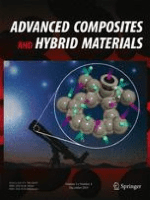
Advanced Composites and Hybrid Materials
Advancing Knowledge in Composite ApplicationsAdvanced Composites and Hybrid Materials, published by SPRINGER NATURE, is a premier journal dedicated to the field of materials science, with a keen focus on innovative composite materials and their applications. With its ISSN 2522-0128 and E-ISSN 2522-0136, the journal has established itself as a cornerstone for researchers and professionals in materials chemistry, ceramics, and polymers, achieving an impressive Q1 ranking across multiple categories in 2023. In particular, it ranks #3 out of 161 in Polymers and Plastics and #4 out of 127 in Ceramics and Composites, highlighting its influential presence within the academic community. The journal aims to provide a cutting-edge platform for the dissemination of groundbreaking research and developments from 2018 to 2024, facilitating knowledge sharing and collaboration among experts. While currently adopting a traditional access model, the significance and impact of research published in this journal cannot be overstated, making it an essential resource for anyone interested in advancing the field of composite materials.
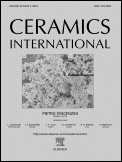
Ceramics International
Discovering the art and science of ceramics.Ceramics International is a premier journal published by ELSEVIER SCI LTD, focusing on advancing the field of materials science with a specific emphasis on ceramics and composites. With an impressive impact factor and a top-tier standing in several critical categories, including Q1 rankings in Ceramics and Composites, Electronic, Optical and Magnetic Materials, and Materials Chemistry, this journal serves as a crucial resource for researchers and professionals alike. Established in 1981, it has consistently showcased cutting-edge research in various domains, including surfaces, coatings, and process chemistry technologies, making it invaluable for those advancing theoretical and practical knowledge in these areas. While access is through subscription, the journal’s rich content, profound insights, and rigorous peer-review process ensure high-quality articles that contribute meaningfully to the scientific community. By fostering innovation and collaboration through rigorous research, Ceramics International stands out as an authoritative source for those dedicated to the evolution of materials science.

Materials Letters-X
Advancing the Frontiers of Materials ScienceMaterials Letters-X, published by ELSEVIER, is an esteemed open-access journal dedicated to the rapid communication of research in the fields of Condensed Matter Physics, Materials Science, Mechanical Engineering, and Mechanics of Materials. Launched in 2019, this journal has quickly established itself within the academic community, achieving Q3 quartile rankings in several categories according to the 2023 metrics. The journal's impactful contributions are reflected in its Scopus rankings, notably within Mechanical Engineering (Rank #308) and Mechanics of Materials (Rank #199). The open-access model promotes widespread dissemination and accessibility, ensuring that cutting-edge advancements in material science are readily available to researchers, professionals, and students worldwide. As it continues to grow, Materials Letters-X aims to inspire innovation and collaboration across disciplines, making it a pivotal resource for those engaged in material research and applications.
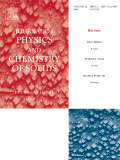
JOURNAL OF PHYSICS AND CHEMISTRY OF SOLIDS
Catalyzing Innovation in Condensed Matter ScienceJOURNAL OF PHYSICS AND CHEMISTRY OF SOLIDS, published by Pergamon-Elsevier Science Ltd, is a distinguished international journal that has been at the forefront of disseminating cutting-edge research in the fields of physics, chemistry, and materials science since its inception in 1956. This journal, which is recognized for its high impact in the Q2 category across multiple subjects—including Chemistry (miscellaneous), Condensed Matter Physics, and Materials Science—serves as a vital platform for researchers, professionals, and students to engage with significant advances in solid-state physics and chemistry. With Scopus rankings placing it in the top 15% of its field across various domains, the journal plays a crucial role in shaping the scientific dialogue surrounding materials properties, synthesis, and applications. Although it does not currently offer open access options, the presented research is widely recognized for its quality and relevance, ensuring that published works contribute meaningfully to ongoing scholarly discussions.

Nano Materials Science
Pioneering Research in Nano Materials.Nano Materials Science is a premier open-access journal dedicated to the dissemination of groundbreaking research in the fields of nanotechnology, materials science, and chemical engineering. Published by KEAI PUBLISHING LTD, this journal has quickly established itself as a leading platform in its area since its inception in 2019, with impressive rankings in the Scopus database, holding a Q1 position across multiple categories, including Chemical Engineering and Materials Science. Based in Beijing, China, Nano Materials Science provides researchers and practitioners access to a wealth of high-quality peer-reviewed articles, fostering innovation and collaboration within the scientific community. With its impact factor steadily rising and a commitment to open access, the journal aims to bridge the gap between theoretical research and practical applications, making it an essential resource for professionals and students eager to stay at the forefront of materials research and nanotechnology advancements.
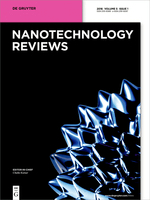
Nanotechnology Reviews
Empowering Global Research in NanoscienceNanotechnology Reviews, published by DE GRUYTER POLAND SP Z O O, stands at the forefront of the multidisciplinary field of nanoscience and nanotechnology. With an Open Access model adopted since 2019, this journal, identifiable by its ISSN 2191-9089 and E-ISSN 2191-9097, disseminates vital research that is accessible to a global audience. The journal is located in Germany and has established itself as a premier platform for innovative research, boasting impressive quartile rankings: Q1 across several categories including Biotechnology, Energy Engineering, and Materials Science, as well as a Q2 classification in Biomaterials as of 2023. The diverse scope enables authors to contribute to a range of topics, from biomedical applications to energy solutions and advanced materials, making it essential reading for researchers, professionals, and students passionate about cutting-edge developments. Additionally, with Scopus rankings highlighting its value across various domains and robust percentiles, including 94 in Engineering (miscellaneous), 93 in Medicine (miscellaneous), and 88 in Biotechnology, Nanotechnology Reviews is an influential and respected journal that fosters scientific dialogue and innovation.